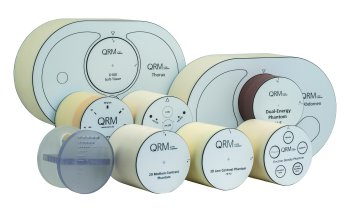Progenitor cell transfer for cardiac repair after
By Stefan P Janssens, Professor of Medicine at the Cardiology Department, Gasthuisberg University Hospital, KU-Leuven, Belgium
Progenitor cell transfer to repair the damaged heart has emerged as an innovative and promising recent development in cardiovascular medicine.

A variety of progenitor cell types that reside in bone marrow, or circulate in the blood, are capable of improving function of the infarcted heart in pre-clinical models, but underlying mechanisms remain incompletely understood. Consequently, the traditional view of the heart as a terminally differentiated organ has been challenged by several groups, who have reported the isolation of cardiac stem or progenitor cells - characterised by the absence of traditional cardiomyocyte, endothelial, or smooth muscle markers, and that have a slow turn-over rate, and might constitute an endogenous reservoir for cell-based repair.
However, massive cell loss of cardiomyocytes and these progenitors alike, such as after acute myocardial infarction, precludes sufficient repair capacity of these endogenous progenitors in the infarcted territory. Therefore, cell-based repair requires inventive strategies to mobilise or deliver significant numbers of progenitor cells to sites of injury and secure their survival, or to stimulate neighbouring cardiac precursor cells to multiply, integrate, and couple with spared myocardium and enhance myocardial function.
While those strategies are very appealing, a major question is whether we have the knowledge and tools to implement them at this stage in clinical practice, at an equitable cost-benefit?
Initial trials of autologous bone marrow cells focused understandably on safety and feasibility both in patients with acute myocardial infarction (AMI) and chronic ischemia and reported enhanced recuperation of LV function. However, by virtue of their design, these studies were not randomised, or lacked a proper control population undergoing the exact same interventions as patients receiving cell transfer. Subsequent double-blind, placebo-controlled randomised trials of autologous bone marrow cell transfer in myocardial infarction patients have shown augmented recovery of global LV function after cell transfer of variable magnitude (absolute increase ranging from 1.2 to 2.5%). The latter was associated with a favourable effect on myocardial perfusion (evaluated as coronary flow reserve), infarct remodelling with a greater reduction in infarct size and greater recovery of regional LV function. Although we are still in a preliminary phase of clinical development, meta-analysis of published randomised controlled trials and cohort studies of bone marrow cell transfer (including 999 patients) confirmed an overall benefit, above and beyond state-of-the-art therapy.
While the absolute increase in global function recuperation may seem modest at first glance, it represents an incremental improvement of almost equal magnitude as the initial therapeutic effects of primary coronary revascularisation. Moreover, we now have convincing data from the largest randomised double blind study that a delayed strategy of cell transfer offers the greatest benefit and that it is almost exclusively observed in patients with a significant reduction in myocardial function at baseline.
These insights will help to facilitate strategies whereby cell-based treatment algorithms are reserved for patients suffering the largest infarcts and where cell transfer can be established according to the highest scientific standards. Indeed, quality assurance of all stem/progenitor cell isolates requires significant haematological expertise, and has been shown to have a major impact on clinical results in early exploratory trials.
At this stage, while safety has been uniformly reassuring, proof of clinical efficacy (improved survival and reduction of heart failure) awaits larger multi-centre outcome trials that are presently being designed. To implement standardised, SOP-based cell isolation, and characterisation protocols, haematological and cell culture expertise from experienced institutions, including central blood bank or Red Cross laboratories or bone marrow transplant centres, will be indispensable.
Finally, enabling such treatment at an affordable cost will require intense collaboration between translational scientists, physicians, healthcare administrators, and private and public health insurance companies.
01.09.2007









